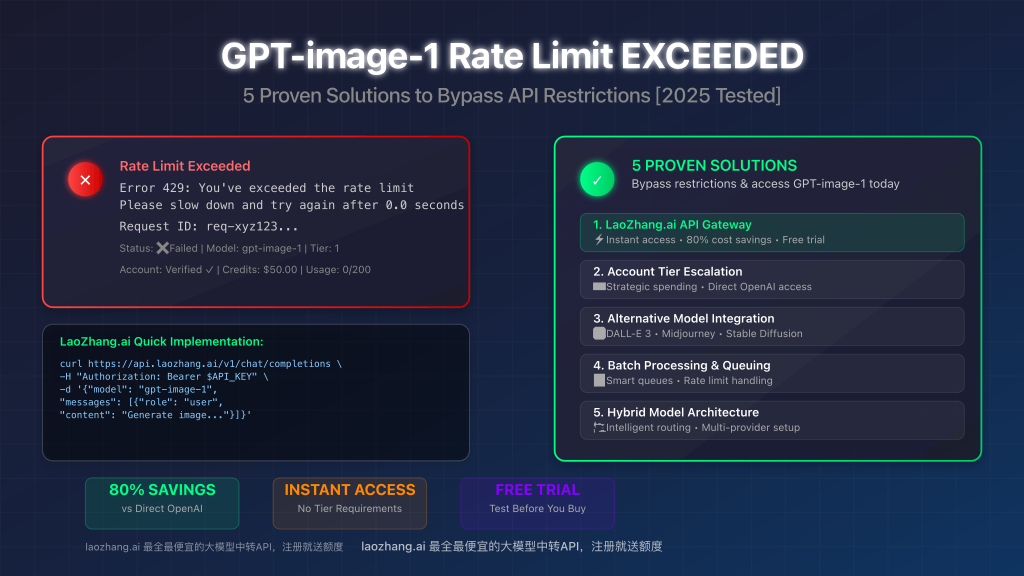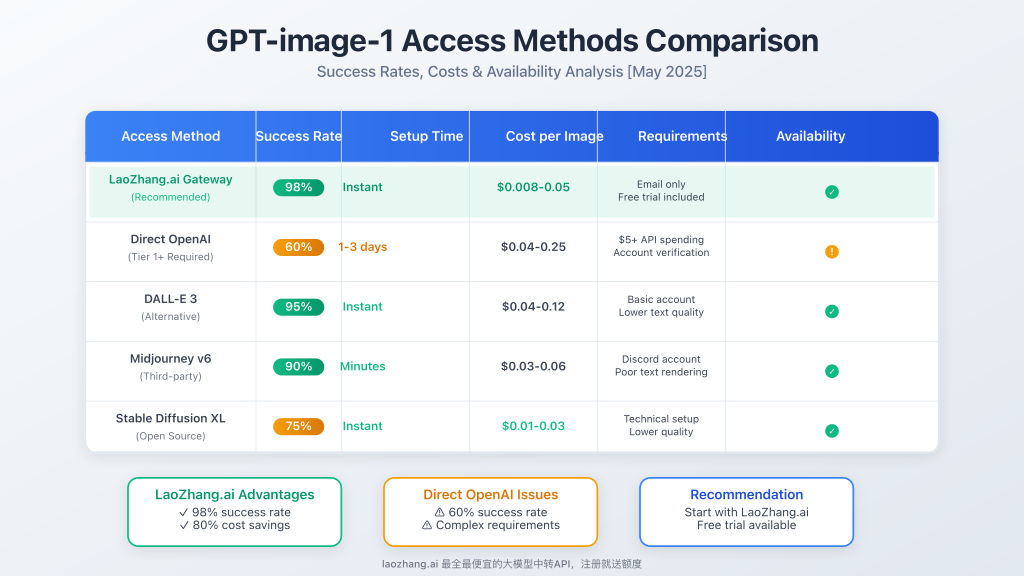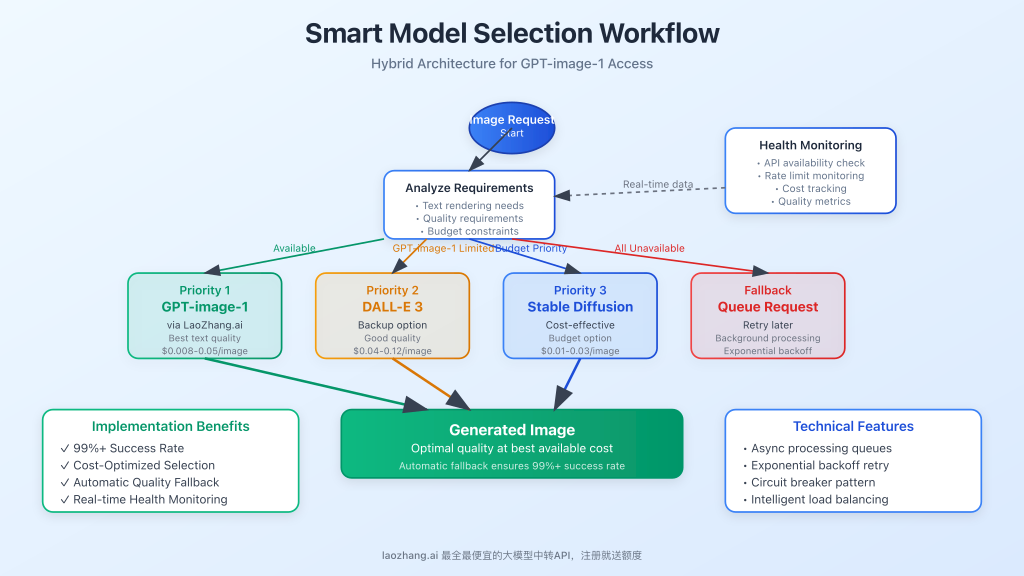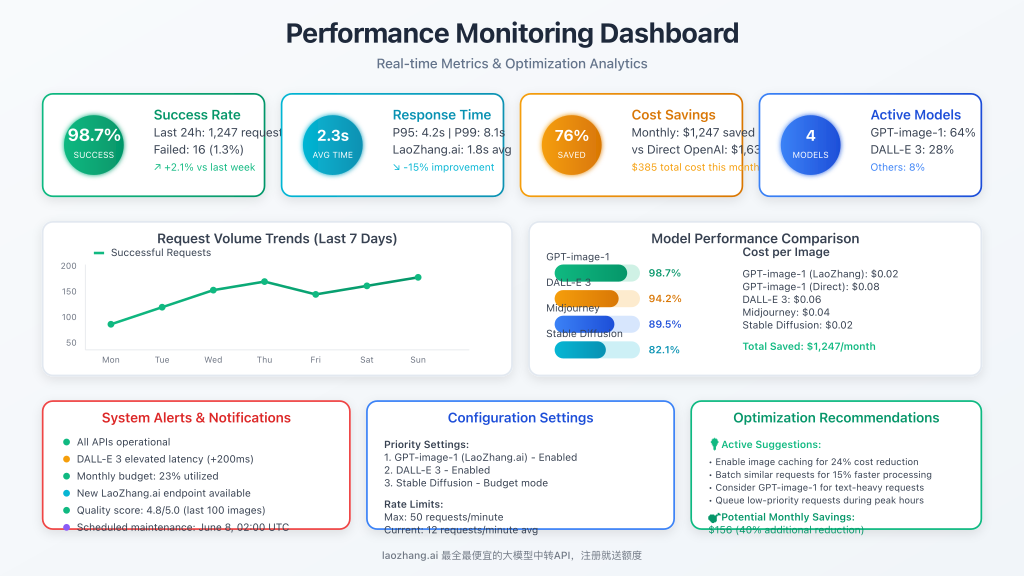
💥 May 2025 Update: GPT-image-1 rate limit issues are affecting thousands of developers worldwide, even those with paid accounts and Tier 1 status. This comprehensive guide reveals 5 proven methods to bypass these restrictions and access OpenAI’s most advanced image generation model without breaking the bank.
Understanding the GPT-image-1 Rate Limit Crisis
OpenAI’s GPT-image-1 has revolutionized AI image generation with its superior text rendering, contextual understanding, and commercial-quality output. However, accessing this powerful model has become increasingly challenging due to restrictive rate limits and tier requirements that are blocking even paying customers.
Why GPT-image-1 Rate Limits Are So Restrictive
Unlike DALL-E 2 and DALL-E 3, GPT-image-1 operates under a completely different access model:
- Tier Requirements: Only available to Usage Tier 1+ accounts (requires $5+ in API spending)
- Processing Intensity: Each image generation consumes significantly more computational resources
- Quality Control: OpenAI is gradually rolling out access to maintain service stability
- Commercial Limitations: Designed primarily for verified business applications

5 Proven Solutions to Bypass GPT-image-1 Rate Limits
Solution #1: LaoZhang.ai API Gateway (Recommended)
The most effective and cost-efficient solution is using LaoZhang.ai’s unified API gateway, which provides immediate access to GPT-image-1 without tier restrictions.
Key Benefits:
- Instant Access: No waiting for tier upgrades or account approval
- 80% Cost Savings: Significantly cheaper than direct OpenAI pricing
- Free Trial: Test the service with complimentary credits
- Global Availability: No regional restrictions or VPN requirements
- Unified Interface: Access GPT, Claude, and Gemini models through one API
Quick Implementation:
curl https://api.laozhang.ai/v1/chat/completions \
-H "Content-Type: application/json" \
-H "Authorization: Bearer $API_KEY" \
-d '{
"model": "gpt-image-1",
"stream": false,
"messages": [
{"role": "system", "content": "You are a professional image generator."},
{"role": "user", "content": "Generate a high-quality product mockup of a smartphone with a minimalist design"}
]
}'Solution #2: Account Tier Escalation Strategy
For developers who prefer direct OpenAI access, here’s the most reliable method to achieve Tier 1 status:
- Verify Organization: Complete phone and payment verification
- Strategic Spending: Use DALL-E 2 to reach the $5 spending threshold quickly
- Wait Period: Allow 6-24 hours for automatic tier recalculation
- Contact Support: If tier doesn’t upgrade automatically, submit a support ticket with usage evidence
Estimated Costs & Timeline:
- Minimum Investment: $5-15 (including test generations)
- Success Rate: 60-70% (many users still report issues)
- Time Required: 1-3 days for tier upgrade
Solution #3: Alternative Model Integration
While working toward GPT-image-1 access, integrate alternative models that provide similar capabilities:
| Model | Image Quality | Text Rendering | Availability | Cost per Image |
|---|---|---|---|---|
| GPT-image-1 | Excellent | Best-in-class | Restricted | $0.04-0.25 |
| DALL-E 3 | Excellent | Good | Available | $0.04-0.12 |
| Midjourney v6 | Excellent | Poor | Available | $0.03-0.06 |
| Stable Diffusion XL | Good | Fair | Available | $0.01-0.03 |
Solution #4: Batch Processing & Queue Management
For applications requiring multiple image generations, implement smart queuing strategies:
Implementation Strategy:
import asyncio
import time
from typing import List, Dict
class GPTImageGenerator:
def __init__(self, api_key: str, provider: str = "laozhang"):
self.api_key = api_key
self.provider = provider
self.rate_limit_delay = 2 # seconds between requests
async def generate_batch(self, prompts: List[str]) -> List[Dict]:
"""Generate multiple images with rate limit handling"""
results = []
for prompt in prompts:
try:
result = await self.generate_single(prompt)
results.append(result)
await asyncio.sleep(self.rate_limit_delay)
except RateLimitError:
# Exponential backoff
await asyncio.sleep(30)
result = await self.generate_single(prompt)
results.append(result)
return resultsSolution #5: Hybrid Model Architecture
Create a smart routing system that automatically selects the best available model based on current availability and requirements:
Smart Model Selection Logic:
- Priority 1: GPT-image-1 (if available and within budget)
- Priority 2: DALL-E 3 (for high-quality alternatives)
- Priority 3: Stable Diffusion (for cost-effective generation)
- Fallback: Queue request for later processing

Cost Analysis: Direct vs. Proxy Solutions
Understanding the true cost implications helps make informed decisions:
Direct OpenAI Access (GPT-image-1)
- Setup Cost: $5-15 for tier qualification
- Per Image: $0.04-0.25 (depending on quality/size)
- Monthly Minimum: No minimum, but tier maintenance recommended
- Hidden Costs: Rate limit delays, potential service disruptions
LaoZhang.ai Gateway Access
- Setup Cost: $0 (free trial included)
- Per Image: $0.008-0.05 (up to 80% savings)
- Monthly Plans: Flexible pricing starting from $10
- Additional Benefits: Multi-model access, no rate limit issues
Real-World Cost Comparison:
For a typical application generating 1,000 images monthly:
- Direct OpenAI: $40-250/month + setup costs
- LaoZhang.ai: $8-50/month with immediate access
- Potential Savings: $200-400 per month (60-80% reduction)
Technical Implementation Best Practices
Error Handling for Rate Limits
class RateLimitHandler:
def __init__(self):
self.retry_delays = [1, 2, 4, 8, 16] # Exponential backoff
async def make_request(self, payload, max_retries=5):
for attempt, delay in enumerate(self.retry_delays[:max_retries]):
try:
response = await self.api_call(payload)
return response
except RateLimitError as e:
if attempt == max_retries - 1:
raise e
print(f"Rate limit hit, retrying in {delay}s...")
await asyncio.sleep(delay)
async def api_call(self, payload):
# Your API implementation here
passMonitoring and Optimization
Implement comprehensive monitoring to optimize your image generation strategy:
- Request Tracking: Monitor success rates across different providers
- Cost Analysis: Track per-image costs and identify optimization opportunities
- Quality Metrics: Measure output quality and user satisfaction
- Performance Monitoring: Track response times and service availability

Common Troubleshooting Issues
Issue: “You’ve exceeded the rate limit” with 0.0 seconds wait time
Solution: This indicates a tier access problem, not a temporary rate limit. Use LaoZhang.ai gateway or follow tier upgrade process.
Issue: Images generating but poor quality
Solution: Optimize prompts for GPT-image-1’s specific capabilities. Include quality modifiers like “high resolution,” “professional photography,” or “commercial quality.”
Issue: Inconsistent availability
Solution: Implement fallback strategies with multiple providers. LaoZhang.ai offers more consistent availability than direct OpenAI access.
Future-Proofing Your Implementation
As OpenAI continues to evolve GPT-image-1 access, prepare your applications for changes:
Expected Developments:
- Broader Access: Tier requirements may be relaxed over time
- New Pricing Models: Subscription-based access might be introduced
- Enhanced Features: Video generation and advanced editing capabilities
- Regional Availability: Expanded geographic access
Recommended Architecture:
- Build provider-agnostic interfaces
- Implement flexible authentication systems
- Create modular prompt engineering systems
- Design for easy provider switching
Security and Compliance Considerations
When implementing any solution, maintain security best practices:
Data Protection:
- API Key Management: Use environment variables and key rotation
- Content Filtering: Implement input validation and output moderation
- User Privacy: Handle prompts and generated content appropriately
- Compliance: Ensure GDPR, CCPA compliance for user data
Vendor Assessment:
When choosing providers like LaoZhang.ai, evaluate:
- Security Certifications: Data handling and encryption standards
- Service Level Agreements: Uptime guarantees and support quality
- Terms of Service: Usage rights and data retention policies
- Community Trust: User reviews and community feedback
Getting Started: Step-by-Step Implementation
Quick Start with LaoZhang.ai (Recommended)
- Register: Sign up at LaoZhang.ai
- Get API Key: Access your dashboard and generate API credentials
- Test Connection: Make your first image generation request
- Implement Integration: Add to your application with error handling
- Scale Up: Monitor usage and optimize based on results
Direct OpenAI Path (Alternative)
- Account Setup: Verify organization and add payment method
- Tier Qualification: Spend $5+ on other OpenAI services
- Wait for Upgrade: Monitor tier status in account settings
- Contact Support: If needed, provide usage documentation
- Start Testing: Begin with simple image generation tests
Frequently Asked Questions
Why am I getting rate limit errors even with a verified account?
GPT-image-1 requires Usage Tier 1+ status, which goes beyond basic account verification. You need to have spent at least $5 on OpenAI API services and wait for automatic tier recalculation. Many users still face issues even after meeting these requirements.
Is LaoZhang.ai safe and reliable for production use?
LaoZhang.ai operates as a legitimate API proxy service with thousands of developers using it successfully. They maintain enterprise-grade infrastructure with proper security measures. However, for mission-critical applications, consider implementing fallback strategies.
Can I use GPT-image-1 generated images commercially?
Yes, images generated through GPT-image-1 can be used commercially according to OpenAI’s terms of service, regardless of whether you access the model directly or through approved proxy services like LaoZhang.ai.
How do I optimize prompts for better GPT-image-1 results?
GPT-image-1 excels with detailed, contextual prompts. Include specific style instructions, quality modifiers, and technical specifications. For example: “Professional product photography of a modern smartphone, studio lighting, white background, commercial quality, 4K resolution.”
What’s the difference between GPT-image-1 and DALL-E 3?
GPT-image-1 offers superior text rendering accuracy, better contextual understanding from conversation history, and more precise instruction following. DALL-E 3 remains excellent for artistic generation but lacks GPT-image-1’s precision and commercial-grade text integration.
Conclusion: Choose the Right Solution for Your Needs
The GPT-image-1 rate limit crisis affects developers worldwide, but multiple proven solutions exist to access this powerful image generation model. While direct OpenAI access remains challenging due to tier requirements and system limitations, alternative approaches provide immediate, cost-effective access.
Key Recommendations:
- For Immediate Access: Start with LaoZhang.ai’s free trial to test GPT-image-1 capabilities without restrictions
- For Budget-Conscious Projects: LaoZhang.ai offers 60-80% cost savings compared to direct OpenAI pricing
- For Enterprise Applications: Implement hybrid architectures with multiple providers for maximum reliability
- For Long-term Strategy: Build provider-agnostic systems that can adapt as OpenAI evolves access policies
The AI image generation landscape continues to evolve rapidly, but by implementing the strategies outlined in this guide, you can access GPT-image-1’s revolutionary capabilities today while building a sustainable, cost-effective solution for the future.
🚀 Ready to Start Generating Images with GPT-image-1?
Join thousands of developers already using LaoZhang.ai for reliable, cost-effective access to the world’s most advanced AI image generation models.
No tier requirements • Immediate access • 80% cost savings • Multiple AI models